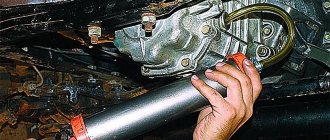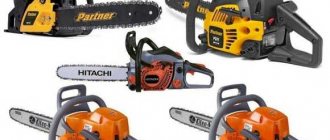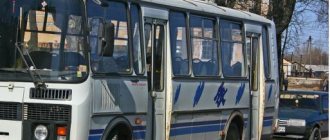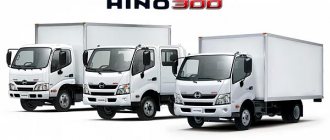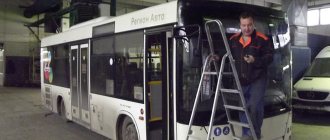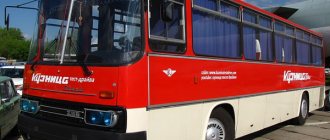When buying tickets, regulars of bus tours first of all pay attention to the location of the seats. Why is it important? Let's explain with an example.
Imagine that you have been planning your trip for a long time, thought through the route, and chose what you thought was a good place - with an excellent view, in the middle of the bus, not far from the door. And then it turned out that it was almost the only one that did not fold out. Everything would be fine, but only when the passengers in front reclined their seats did you find yourself squeezed on both sides. As a result, what was dreamed of as a wonderful journey turned into torture.
We will tell you in the article about all the nuances that you need to take into account when choosing a seat on the bus in order to avoid getting into a similar situation.
Long distance buses - good and different
If you think that knowing the seat number is enough to understand how comfortable it is, you are deeply mistaken. The fleet of modern long-distance buses (LDBs) is so diverse that until you see the layout of the interior, it is premature to draw conclusions.
For example, you got seat number 14. In a tourist MAN with 59 seats, this is the beginning of the cabin, 4th row; but in the cabin of the same model with 45 seats, seat No. 14 is located in front of the door and, most likely, does not recline. In a 20-seater Mercedes, the same number 14 is located on the left by the window at the end of the cabin, and in a 45-seater it is on the right by the aisle, 4th row. And a lot of such examples can be given.
Even the typical diagram of a specific model is not always accurate, since the carrier has the right to make design changes - add a bathroom, a kitchen, remove some of the seats (for example, the back row), and equip a sleeping or cargo compartment.
Site selection criteria
As we know, there is no dispute about tastes, so everyone may have their own criteria for choosing a convenient place. Experienced tourists recommend first of all taking into account such parameters as:
- safety;
- arrangement of seats in relation to the door;
- cabin segment (beginning, middle, end).
Let's look at them in more detail.
Dangerous and safe
Reports of road incidents involving ADF appear with alarming frequency, making it every traveller's No. 1 priority to reach their destination in one piece.
What places are potentially dangerous?
- First row, especially to the right of the aisle. In a head-on collision, they are the first to be hit.
- The last row may be damaged if the impact comes from behind. In addition, during sudden braking, rear row passengers have a higher risk of injury by flying into the aisle.
- Armchairs by the window on the left side of the cabin. We drive on the right side, so this side of the bus is always turned towards the flow of traffic.
The safest seats on a long-distance bus are as follows.
- In the middle of the cabin on the right side. But even in this relatively safe zone, it is better to sit not by the window, but near the aisle.
- The seats are immediately behind the driver. It is believed that the driver, instinctively avoiding danger, removes this zone from the impact, and, on the contrary, exposes the right side.
“Insidious” – next to the door
Places located in close proximity to the door are especially “tricky”.
If they are behind it, in winter and autumn, this is a zone of cold air currents that hit passengers every time the door opens. By the way, in summer the influx of fresh air can rather be considered a plus.
If the seats are on the right side in front of the door in the middle of the cabin, they do not recline. This is designed so as not to interfere with people getting off at stops. Typically, such seats are cheaper, but passengers do not always fully understand the reason for the bonus.
The area next to the door is not without its merits. You will be the first to get off the bus at the parking lot, which means you will get to the buffet, toilet, or just have time to smoke faster.
Disadvantages of the back rows
Few people like the last row in the ADF. And there is good reason for this.
- It shakes more violently here, and people with seasickness get seasick.
- The backs of the seats do not recline, which means there is no opportunity to relax or take a nap.
- If you use a general air conditioner rather than a climate control system to cool the air, it blows strongly from behind.
- If there is only one TV, you cannot see or hear it from the back row. The same goes for a guide during an excursion.
Some tour operators usually sell two tickets for the last row of 5 seats. Then their owners will have the opportunity not only to sit down, but also to lie down fully.
If a collision is inevitable...
The first sign of an approaching disaster is that you begin to move towards the side of the road or the oncoming lane. First of all, you need to call out to the driver to see if he has fallen asleep. This is not uncommon on a long-distance bus. If not, it means he already sees the threat and is trying to avoid it. In the remaining seconds, you need to have time to group and take the safest position.
Lean forward slightly and rest your arms, barely bent at the elbows, on the back of the front seat. Tilt your head towards your hands as close as possible. Straighten your legs and place them on the floor, being careful not to tuck them too much under the front seat. It is in this position that you have the best chance of surviving without serious injury.
If the bus “remained on its feet” and remained operational, consider that you got off with a slight fright. If it lies on its side or roof, the most interesting is yet to come. A fire can break out at any moment and in a matter of minutes the salon will turn into ashes. There is no need to succumb to general panic and break into a blocked door, creating a crush.
Remember at the very beginning we inspected emergency exits and hatches? Now is the time to do them. If they don’t give in, you need to break the glass. Just don’t try to do it with your foot or, especially, with your hand, as they do in the movies. At best, you will waste your time, at worst, you will get injured.
If the accident was really serious (and, judging by the layouts, it is), then when you look around, you will find pieces of handrails, fragments of racks or other weighty metal objects. Use them to hit the glass, having previously closed your eyes.
Help the wounded get out, move to a distance out of reach in case of an explosion, and wait for rescuers. And keep in mind, your trip could have ended much worse if you didn’t know which seats on the bus are the safest...
Bus tours are very popular today, and more and more people prefer the romance of traveling in comfortable long-distance buses to air travel. This type of transport has a number of features compared to the usual city buses and minibuses. First of all, tourist buses are equipped with comfortable soft seats with armrests. In addition, the ADS has the ability to transport oversized cargo; for this purpose, there are special compartments under the floor and shelves located in the cabin. There are also buses equipped with chemical toilets, water dispensers, refrigerators and much more.
All these factors must be taken into account if you are planning a long bus trip. And of course, you need to choose the optimal and safest location in the ADS, especially considering that the seat is “assigned” to the passenger until the end of the trip and cannot be changed. Based on this, it will be useful to know the location of the seats on the bus, the layout of which may differ. And think: maybe you should inquire about the availability of free seats on a long-distance train so that the trip brings only positive emotions.
Location of seats on buses
In the bus fleets of travel companies you can find a huge number of a wide variety of regular buses, differing in modification. A unified numbering of seats on a long-distance bus, the scheme of which would be the only one, has not yet been invented and today different carriers have the right to equip ADS at their own discretion. Moreover, even buses of the same brand, same year of manufacture and upholstery color can have a different number of seats. Therefore, to the question “How many seats are there on the bus?” We can only give an approximate answer.
For example, if we take a MAN tourist bus, the layout of seats on it may differ significantly. In a standard model there will be 59 of them, with the numbering starting from the first right seat. And if you drive a MAN Lion's Coach R 08, designed for 49 passengers, then the first seat will be in the second row on the right. The front two seats will have numbers 46 and 47. As you can see, even the brand of ADS depends on where you will sit.
The same applies to other brands of buses. For example, in a small standard Mercedes 22360C there are 20 seats, and they are numbered generally chaotically, namely: two seats located next to the driver are numbered 19 and 20, behind the bus driver there are 1 and 2 seats, and then the numbering of seats on the bus goes to the right - left. But, if you transfer to a Mercedes-Benz 0303, designed for 45 passengers, then the seats will be numbered from left to right.
As you can see, the layout of seats on long-distance buses may differ depending on the ADS model. But this is not the only nuance; the carrier can also make design changes by adding service space, a dry closet and much more. In this case, the scheme will undergo changes again.
Therefore, before purchasing a ticket, it would be a good idea to check with a specific carrier about the location of the seats.
Let us give as an example several seat layouts for buses most commonly used in Russia.
The presented diagrams are taken from the website of the State Unitary Enterprise SO "Sverdlovsk Regional Association of Passenger Motor Transport". On this same site you can find diagrams of other buses.
But in addition to your convenience, you also need to take into account safety; the choice of the right place also depends on this parameter.
Where is the safest place to sit on a long-distance bus?
Since news reports are full of accidents involving tourist buses, you should carefully choose the area in which you plan to sit.
In order to choose the safest seats on a long-distance bus, you must consider the following recommendations:
- As when driving a car, the safest place is considered to be the seat located immediately behind the driver's seat. This is explained by the fact that in an unforeseen situation the driver, on a subconscious level, tries to evade danger in order to protect his life. Accordingly, the opposite side of the vehicle most often comes under attack.
- The best seats on a long-distance bus are located in the center of the cabin. In the event of a head-on collision or impact that may occur at the rear of the bus, this area will remain the most undamaged.
- After finding out from the carrier how the seats on the bus are located, try to give preference to the seats installed on the right side of the cabin (near the aisle).
This applies to preferred zones in a vehicle. But recommendations about the most dangerous chairs will be no less useful.
Where is it better not to take the bus?
There are places in the ADS that experienced tourists prefer to avoid, namely:
- Last seats. A lot of fumes accumulate in this area, and after just a few hours of driving like this, you risk getting poisoned by exhaust fumes. In addition, in the back of the bus you get more motion sickness, and with sharp braking the ADS can fly into the aisle.
- First row (near the door or driver). In a frontal collision, this area is most often affected, so even despite good visibility, it is better to avoid this arrangement.
When communicating with your travel agent, make sure the seats do not recline. Decent carriers prefer not to sell tickets for such seats at all, using them for other purposes, but there are those who will not miss the profit. Usually such places are located at the end of the ADS, as well as before the exit in the middle of the cabin.
Take into account the time of year in which you are planning your tourist trip. In winter, it is better not to sit immediately outside the exit, so as not to suffer from cold air currents. And if you prefer to get off first at stops to drink hot tea, then it is better to sit down before the exit. This is usually the warmest place.
In custody
As you can see, the seat arrangement on a long-distance bus is very important, but to find out the exact layout, it is best to go to the travel agent's office and ask for a detailed seat plan. Be careful when buying the cheapest tickets, as they are often sold to the most inconvenient and unsafe seats.
kratko-obo-vsem.ru
Equipment for the Mercedes Sprinter passenger car
| 1 | Full body glazing (glued glass). |
| 2 | Thermal and noise insulation of ceilings, floors, doors, walls. |
| 3 | Ventilation emergency metal hatch. |
| 4 | Interior lighting. |
| 5 | Passenger seats with high backrest (upholstery in ruffled fabric) with seat belts. |
| 6 | Interior decoration: plastic composite panels. |
| 7 | Interior heater of antifreeze type, 8 kW with flow distribution to 3 deflectors. |
| 8 | Plywood flooring + anti-slip floor covering. |
| 9 | Rear door locking device. |
| 10 | Interior handrails. |
| 11 | Side stand. |
| 12 | Exhaust system. |
| 13 | Emergency hammers (2 pieces). |
| 14 | The electric sliding door drive is rack and pinion. |
Car interior diagram
Depending on the vehicles that are used for conversion into vehicles for transporting passengers, the InvestAvto special vehicles plant offers the following interior layout options.
Note:
The number of seats is the seats in the cabin + the seats next to the driver (in the cabin) + the driver's seat. Seat dimensions:
Length: 540 mm Width: 410 mm Depth: 410 mm
Foreign cars
Options for car interior layout for transporting passengers on a L4 length base (long wheelbase with an increased rear overhang).
Mercedes Sprinter base car
| Smoothly adjustable heating and ventilation system with 4-stage fan control and two additional fan settings. deflectors to distribute fresh air |
| Easy loading thanks to rear hinged doors with an opening angle of up to 180° |
| Driver's seat with a wide range of adjustments for optimal positioning |
| Steering with rack and pinion mechanism and hydraulic booster |
| Central locking with remote control |
| 16-inch tires size 235/65 R 16 (for the 3.5 t GVW version) |
| Two-way adjustable headrests with fabric upholstery on all seats |
| ADAPTIVE ESP® incl. ABS, Traction Control (ASR), Electronic Brakeforce Distribution (EBV) and Brake Assist System (BAS) |
| Adaptive brake lights |
| Airbag (driver) |
| Recoil system for cars with automatic transmission |
| Three-point seat belts in all seats, for the driver's seat and single front passenger seat - with pretensioners and limiters |
| Independent front wheel suspension |
| Burnt out lamp warning system |
| Front suspension stabilizer (for the 3.0 t version - as an option) |
| Adjusting the headlight range |
| Laminated safety windshield |
| Number of cylinders | 6 | 4 | 4 |
| Cylinder arrangement | V 72° | in-line | in-line |
| Number of valves | 4 | 4 | 4 |
| Working volume (cm3) | 2.987 | 2.148 | 1.796 |
| Power (kW/hp) at rpm. | 135/184 at 3800 | 65/88 at 3800 | 115/156 at 5000 |
| Rated Torque (Nm) | 400 | 220 | 240 |
| Cargo space volume, (m3) | 11,5 | 15,5 | |
| Type of fuel | diesel | diesel | super class gasoline |
| Tank capacity (l) | ok 75 | ok 75 | approx 100 |
| Fuel system | microprocessor direct injection system with common rail power supply system, turbocharging and charge air cooling | microprocessor injection | |
| Battery (V/Ah) | 12/ 100 | 12/ 74 | 12/ 74 |
| Generator (V/A) | 14/ 180 | 14/ 90 | 14/ 150 |
| Drive unit | rear 4x2, full 4x4 | rear 4x2 | rear 4x2 |
www.autozavod.com
Features of choosing a seat on a double-decker bus
A travel agency may offer you a trip on a double-decker bus. This vehicle has a different seat layout and its own characteristics.
To decide which is best for you, study the pros and cons of each floor.
Advantages of the first floor:
- spacious interior;
- there are fewer people than at the top;
- comfortable tables;
- Nearby there is a bathroom, kitchen, water cooler, refrigerator.
Of the minuses
The cabin is located low in relation to the road, so you won’t be able to admire the panoramic views.
Be prepared for drivers to continue chatting in the evening, and perhaps listen to music or watch a movie.
Advantages of the second floor
- magnificent panoramic view;
- Quiet in the evening, because the drivers are below.
There are also disadvantages
It is more cramped here than on the first floor, which will be especially felt by tall and obese passengers.
Be prepared to descend each time to use the facilities or during stops. The second floor is not for people with disabilities.
And instead of a conclusion. Having chosen a place you like, make sure that it is officially indicated in the voucher (everything is clear with the ticket), otherwise it will turn out like in that joke - whoever gets up first gets the slippers.
Unfortunately, there is no uniform standard for numbering seats on buses. Based on the results of a survey of Novosibirsk carriers, it turned out that 6 different methods of numbering seats in the cabin are used. Even one carrier may have buses with different numbering systems. Below are examples of numbering that we found on the Internet and combined into a single picture.
The problem is aggravated by the fact that different brands and models of buses have different seating arrangements and in most cases it is impossible to predict in advance which bus will go on a trip. According to the agreement with the bus station, the carrier is obliged to put on the route a bus of a certain capacity and type (for example, 42 soft seats). But the bus model becomes known only shortly before departure. Thus, even if you have the correct seat maps in hand, it is impossible to indicate the one you need, since the make and model of the bus are unknown in advance.
Having comprehensively analyzed the task, we came to the conclusion that we were not able to implement it with a satisfactory result. We are aware that some competing sites provide a seating chart. We also know that this led to scandals, since the information provided in fact turned out to be unreliable.
So, you are probably wondering - what kind of buses are these on which you will make your wonderful trips to different cities and countries? These are cars specially designed for tourism, which are produced by a variety of companies. You certainly know some, for example, Mercedes, Neoplan, but most companies that produce tourist buses (Van-Hool, Setra) are usually little known among people not involved in the tourism business, but at the same time, these are in their field.
Moving away from stereotypes and big names, let's find out what buses exist for tourist trips? First of all, they can be divided into one-story, one-and-a-half and two-story. Decent companies that care about their clients use only one-and-a-half and double-decker buses, which are considered the most convenient for tourist purposes.
Differences between one and a half and double decker buses
The difference between these buses is that in a one-and-a-half-decker bus the floor with passengers is raised relative to the level of the drivers and is the only passenger floor, while on a 2-decker bus there is a first floor where passengers can also sit. Now let's move on to the interior of the bus. It is quite standard, although it may differ in some not very significant details. The seats are always positioned the same way, as shown in the photo, only the distance between them differs.
Interior of a modern bus
It depends on the class of the bus - the more stars, the greater the distance between the seats and the fewer seats there are. But in any case, there is enough space, in addition, you can always recline the back, or move the seats apart from each other. As for the number of seats on the bus, depending on the manufacturer, the number of seats varies slightly, but on average for a one and a half bus it is 42 seats, and for a two-story - 62 seats. There are also seats on the buses with a table, depending on the type of bus there may be a different number of them.
In addition to external data and the number of seats, buses differ in equipment, i.e. the presence of an acoustic system (music), a video system (set: color monitors suspended from the ceiling, usually 2, 3 or 4, and a VCR), air conditioning, bio-toilet (although the toilet is always present).
This is what TVs look like now in the salon
And finally, it is worth adding that the undoubted advantages of tourist buses include the luggage compartment, which can accommodate a very large amount of a wide variety of luggage.
So, this is the main thing that can be said about the buses that travel companies offer.
In modern bus fleets you can find a huge number of modifications of buses, differing not only in the number of seats, but also in their layout in the cabin. There is no single scheme common to all manufacturers. And not only manufacturing companies, but also the carriers themselves can re-equip the cabin at their discretion. Therefore, even equipment of the same brand and year of manufacture may have a different number of seats and their numbering.
The only requirement for such actions is not to violate established safety rules.
You can see the most common seating arrangements in long-distance buses in the photo:
Internal parameters
Reliability, long service life, simplicity and ease of operation, as well as many other advantages, would not be present in Setra buses without equipping them with high-quality units and components from leading enterprises in the industry. The Ulm plant prefers to cooperate with compatriots, equipping its own buses with mechanisms and elements produced in Germany.
Bus Setra S415NF. Photo Wikipedia
This is due to several reasons : obtaining high quality products, convenience and benefits of cooperation, in particular, knowledge of the specifics of the market and the requirements of potential clients, the absence of the possibility of difficulties and problems arising in connection with the import of components from abroad, saving time and financial resources when preparing documents and transportation of units, others. The Setra line included models produced for the North American market; they were equipped with units manufactured in the USA. Such models were available in small quantities; they are the exception to the rule.
Engine
Fuel efficiency and vehicle profitability are ensured by Setra bus engines. The first models were equipped with diesel units of the Henschel brand, the production of which was carried out by a company from Germany. But in 1975, Henschel & Son stopped producing engines.
Setra S8 bus. Photo Wikipedia
All subsequent models, including modern ones, are equipped with Mercedes engines. As an option, some examples were equipped with MAN units. North American models were equipped with Detroit engines. A representative of the 300 series, the Setra 317 HDH one-and-a-half-decker bus was equipped with a turbodiesel, eight-cylinder Mercedes-Benz with a power of 442 hp.
checkpoint
Setra buses are equipped with gearboxes from several brands. First of all, these are Mercedes, but also ZF and Voith. Models are equipped with manual and automatic transmissions, the number of stages is most often 6 steps. North American versions of the vehicle were equipped with an Allison gearbox.
Brake system
Setra buses in most cases have a pneumatic system. Disc, or less often drum, brakes have a large number of systems to ensure the highest level of safety and comfort in performing driving duties.
Fuel
Despite the use of the latest technologies, the manufacturer continues to offer buses that operate only on traditional types of fuel. For Setra equipment it is diesel.
Setra S415HD diesel bus. Photo Wikipedia
Location of seats in various modifications of PAZ buses
The total capacity of the PAZ-32053 modification is 41 passengers, seating capacity is 25. The numbering in the cabin is very confusing. The first three seats, located to the right of the driver and facing the passenger compartment, have numbers 23, 24, 25. Next on the left are numbers 5 and 6, located parallel to the axis of the cabin, and only after them on the left side are seats 1, 2, 3, 4. The right row starts with numbers 21, 22. Other options are possible.
The PAZ 4234 model belongs to the small class bus equipment. It has 25 seats and an additional 18 passengers can ride standing.
The photo of the layout of the seats inside the bus shows that all seats, except the rear one on the right, are located in the direction of travel of the car. In the modification, which has 30 passenger seats, there are three combined seats in front facing the interior of the cabin. In the latter case, the numbers of the first three seats are 30, 1, 2. Seats 3 and 4 are located in the row on the left. Further, all numbers follow in order.
In the VECTOR NEXT groove, depending on the purpose (urban/suburban), several options for completing the internal space are provided.
Seats can be 17, 21, 25.
Seat layouts for KAvZ buses
KAvZ brand buses belong to the middle class equipment used on suburban and intercity routes. The number of passenger seats is 31, the total capacity is 54 people.
All seats are located along the direction of the cabin. The numbers start from the first row, on the right side, with the seat located near the aisle.
The KAvZ 4238 equipment has, depending on the modification, 34, 35 or 39 seats. Numbering is standard. Models are used for suburban and intercity routes, as well as school cars.
Company history and brand features
The history of SETRA buses dates back to 1911. The company was founded by Karl Kassbohrer, which was reflected in the design of the cars: until 1983, a large metal letter “K” was displayed in the center of the radiator grille. It is still present, but made of plastic, shifted to the right and located under the SETRA inscription.
The brand name SETRA is an abbreviation; this is how the main design feature of these buses is encrypted. Their body is self-supporting - SelbstRAgende, with a welded frame made of metal angles. The first model of this design, SETRA S8, appeared on German roads in 1951.
The layout of the power units was made according to a “pushing” scheme - the engine is in the aft compartment. It did not change in subsequent years, except in those cases when the vehicle body was made of a composite one - the SG series of articulated city buses. Since 1994, the company has been part of the Daimler AG concern.
In the European ranking table, the SETRA brand is among the top ten manufacturers of luxury tourist and intercity models. However, the range of cars it produces is much wider. It also includes medium-comfort intercity buses (MD series), as well as regular buses operating on municipal routes - SL series.
Seat arrangement options for Hyundai buses
Hyundai Universe large-capacity tourist buses have 43 or 47 passenger seats, separated from the driver's seat by a solid partition. There is a guide chair to the right of the driver. The numbers start from the left seat of the first row.
You can choose a passenger bus for city, suburban, intercity routes with the required interior layout. Most models are in stock.
This article will talk about seats on the bus. We'll talk about which ones are best to choose in order to feel safer, and which ones are best to ignore so as not to ruin your trip. Let's also consider the diagrams of various buses.
Seats on long-distance buses
Transporting people over long distances occupies a special niche in passenger transportation. It should be noted that tourist tours, which often use large-capacity vehicles, are separate. The location of the seat on the bus, the layout of which can change with different vehicle capacities, can largely determine the comfort and safety of the trip. As a rule, the passenger's seat is reserved until the end of the trip, so you need to be very responsible about his choice.
The “200th” series is the constructive foundation of the brand
In 1976, Setra Omnibusse began mass production of “200 series” buses, the design and most of the design solutions of which form the basis of today’s model range. Externally, the cars were distinguished by the shape of the front end and a solid windshield. They were equipped with disc brakes and air suspension. The body with a welded spatial frame remains a signature feature of the brand.
The basis of the model range was the S200 model, presented in 1972 at the Geneva Motor Show. The car had a revolutionary one-and-a-half-story design, which made it possible to provide passengers with special comfortable options during a long journey. On its basis, the SETRA S215 HD models were built, as well as all cars with model indices HDH and HDS.
The “two hundred” edition consisted of the following set of models:
- S208, S209 – small-sized machines for local lines.
- S211, S212 – city buses.
- S213 and S215 are intercity and tourist models.
Seats on buses - location
In the fleets of travel companies and enterprises involved in transporting people over long distances, there is a wide variety of car models. There is no single seat position on a bus, the layout of which would be common to all manufacturers. Manufacturers, as well as transportation companies, can equip vehicles at their own discretion, as long as they do not violate the safety requirements regulated by regulatory documents. Even single-brand buses produced in the same year may differ in both interior design and number of seats. To the question: “What is the location of the seats on the bus, what does the layout inside look like?” The answer is only approximate.
Before purchasing a ticket, you should check with the carrier about the seat layout.
In addition to convenience, you should consider safety, which determines the choice of the right place.
Important
When purchasing tickets, the details of seating in the cabin are not indicated. You can find out all the details about a particular bus from a travel agent, and for a conversation it is better to come to the company’s office in person. There they will be able to show you exact bus diagrams, seat layout plans, and tell you about what they would prefer to keep silent about when placing an order online.
The Setra bus is the brainchild of the German company Setra Omnibusse from the city of Ulm. The company produces tourist, intercity and city buses of varying degrees of capacity and comfort. All of them are equipped with diesel engines from Daimler-Benz AG, located in the rear compartment of the body.
Safe places
News feeds often talk about road accidents involving passenger vehicles. Therefore, careful selection of the location of the seat on the bus, the selection scheme of which is discussed below in the text, will directly affect the safety of your life.
For a safer trip, you need to consider the following points:
- one of the safest places is the one located behind the driver’s seat;
- you should choose seats located in the center of the cabin;
- It is better to choose seats installed on the right side.
The following places can ruin your trip:
- The last seats, because in this part, as a rule, there is a lot of burning, and after a certain period of time there is a risk of getting poisoned by exhaust fumes. Riding in the rear leads to more severe motion sickness, and during emergency braking there is a risk of flying into the aisle between the seats.
- Seats located next to the door or driver.
- Non-folding seats, usually located at the end, as well as in front of the exit, in the middle of the cabin.



